Recent Mold Remediation Posts
Ceiling Moisture and Mold Damage in Brooklyn
2/10/2024 (Permalink)
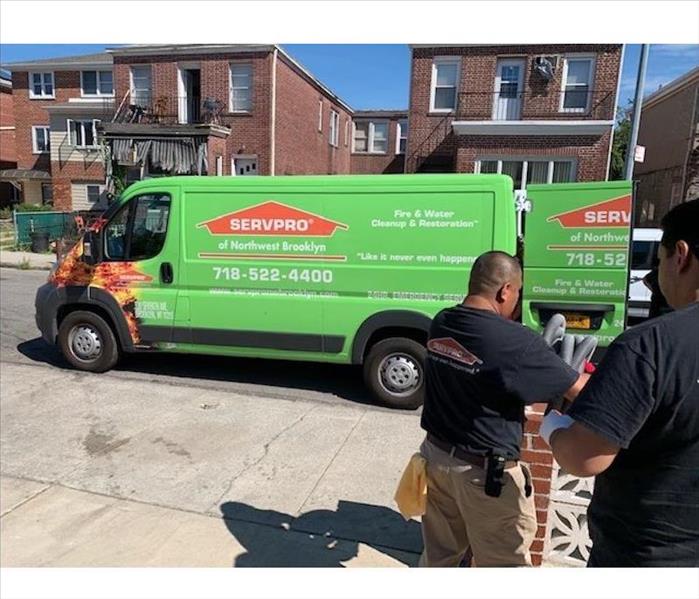 SERVPRO team is on the scene to remediate mold damage in Brooklyn. Here To Help®
SERVPRO team is on the scene to remediate mold damage in Brooklyn. Here To Help®
SERVPRO® Efficiently Remediates Mold Spore Proliferation
Mold spores exist both indoors and outdoors in any space in some capacity. When water damage or other disasters strike, however, it can create the conditions necessary for mold to spread and potentially cause property damage.
When you find mold damage in your Brooklyn property, SERVPRO technicians can remediate the spores to pre-disaster levels while restoring damaged structural materials and belongings.
Mold and Water Damage Go Hand in Hand
Where water goes, mold typically follows in short order. Mold tends to grow with an indoor relative humidity level of over 60% and needs organic material to thrive and spread. Water damage, even from small pipe leaks, can lead to the spread and concentration of mold spores in humid areas. Ceilings may prove particularly vulnerable, especially in bathrooms and multi-family units with damaged plumbing.
Some molds, meanwhile, are not mold at all. Pink slime, often found in the nooks and crannies of bathrooms, is a bacterial buildup of airborne Serratia marcescens rather than a type of mold.
SERVPRO Repairs Ceiling Mold Damage
Restoration technicians can remove moisture with careful demolition, extraction, and drying, which can help remediate mold. Because drywall contains organic material, replacing damaged material is typically more cost-effective than simply repairing it. They can also clean up mold spores with the following tools and techniques:
- A combination of careful containment measures, personal protective equipment usage, and negative air pressure machines can pull mold spores toward the floor for pickup with HEPA filter vacuums.
- OSHA-approved, EPA-registered biocide solutions remediate mold and bacteria with various methods, including immersion, manual application, and spraying.
- After cleaning up excess spores and the water damage that allows them to thrive, SERVPRO professionals can focus on repairing drywall and removing mold-related odors.
Regardless of when or where disaster strikes, SERVPRO of Northwest Brooklyn is Here to Help®. You can contact the crew at (718) 522-4400.
What To Know About Mold Damage and Your Insurance
1/22/2019 (Permalink)
 Call your agent to find out if you are covered
Call your agent to find out if you are covered
Mold Damage And Your Insurance
If you’ve discovered mold damage in your rented Brooklyn, NY, home, you may be wondering if your rental insurance policy will cover the damage and remediation. The answer to this depends both on your policy and the damage type.
1. How Insurance for Renters Works
Renters insurance policies typically cover the personal property of the renter, while the landlord’s insurance covers the structure. Most policies include coverage for damages caused by an emergency situation, such as fire or flood, and any damage resulting from those situations. They may also cover damages caused by accident or nature up to the point when the resident has had reasonable time to discover and fix the problem. Most insurance policies will not cover damages resulting from neglect.
2. What Mold Damages May Be Covered
Your rental insurance may have provisions for mold removal and remediation if the mold growth is caused by an emergency, such as water from a fire hose, nature, or an accidental pipe break, among similar situations. In many cases, they may also cover the costs for hiring a mold remediation professional.
3. What Renters Are Responsible For
In most cases, renters are responsible for reporting any mold removal needs as soon as they realize there’s a problem. Mold damage to a renter's personal property also falls to them, while damage to the actual property may be covered by the landlord’s policy. In many cases, renters insurance may require the renter to do everything they reasonably can in order to report and remedy the mold problem. The renter is also responsible for having insurance and knowing what the policy contains.
In most cases, a rental insurance policy will cover damage up to the point where the renter could have prevented it from getting any worse. This means that as soon as damage is found, appropriate steps should be taken to stop the infestation and prevent further spread. In some cases, your policy may even cover the cost of professional cleaning.
The Truth About Bleach and Mold
12/28/2018 (Permalink)
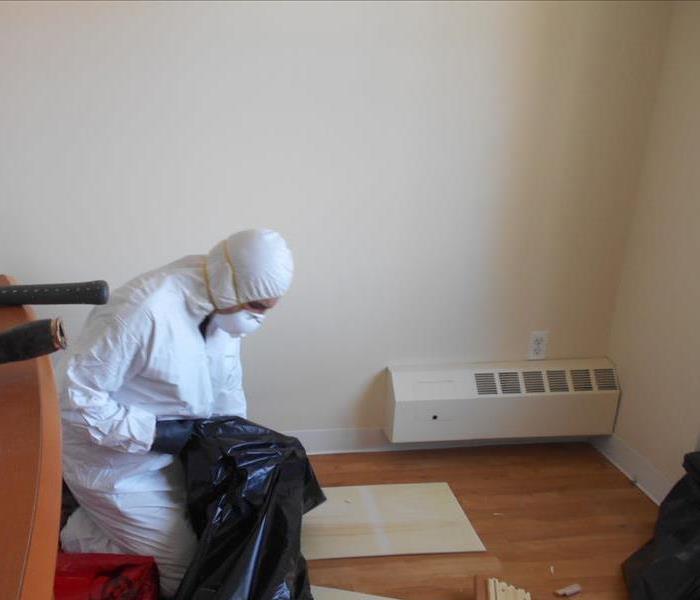 Technician removing moldy material from the home.
Technician removing moldy material from the home.
For many households, chlorine bleach is generally seen as your “go-to” cleaner for tough jobs. While bleach is well-known for its disinfecting properties that doesn't mean it's the best choice for mold - it has distinct drawbacks when cleaning flood impacted buildings.
It is a convenient cleaner and stain remover for hard, non-porous surfaces. Bleach is not made to “soak in”, therefore, its disinfecting properties are limited to a hard surface like tile or glass. If used on porous materials, such as wood and drywall, bleach will stay above the surface and only kill the mold on the surface, while the water is absorbed in.
The surface mold looks gone, but the fact is, if the mold is not removed from the material, it will most likely return and make your mold problem worse in the long run. Mold remediation requires a cleaner to reach deep down into wood and other porous building materials.
Further, its effectiveness in killing bacteria and mold is significantly reduced when it comes in contact with residual dirt, which is often present in flooded homes. If bleach water comes into contact with electrical components and other metal parts of mechanical systems it can cause corrosion. Bleach water can also compromise the effectiveness of termite treatments in the soil surrounding the building.
SERVPRO of Northwest Brooklyn cares about the proper restoration of your home or business. We have the know-how and the specialized equipment needed to assess and/or repair your damage.
When Renters Insurance Will and Will Not Cover Mold Damage
9/11/2018 (Permalink)
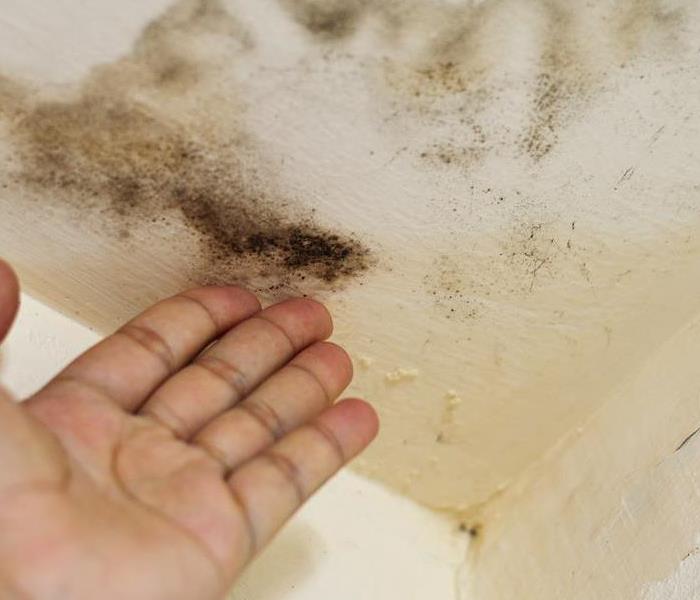 Ceiling Mold Damage
Ceiling Mold Damage
Instead of asking whether or not rental insurance covers mold damage, you should consider rephrasing the question to "Does renters' insurance cover mildew damage or mold remediation?" Phrased like this, you have a better idea of what to look for when perusing your renters' insurance policy. During your review, you should look for the following items:
• Exclusions
• Duty to mitigate
• Mold caused by a covered peril
Within each of these sections, you should find information regarding what type of damage is and is not covered.
Exclusions
Typically, the limits on mildew damage in a rental insurance policy are relatively low, at right around $5,000. This should be enough to cover the cost of damage. If the damage is more than $5,000, the insurance company might assume that the damage was present for a while and that you failed to mitigate it in time.
Duty To Mitigate
If the mold was present before you moved in, or if it’s a result of an inherent defect with the property, then mold removal is likely the landlord's responsibility. However, if the damage was caused by a covered peril, and if it could have been stopped from spreading, the insurance company may only cover it up to the point where you should have known about it. For instance, if the damage was caused by a leaky pipe, and if you knew about the leaky pipe but failed to inform your landlord of it so he or she could make the repair, damage caused to your belongings may not be covered.
Mold Caused by a Covered Peril
If the mold damage was caused by, say, the water from a hose used to put out a fire, and if fire is covered under your policy, then the damage should be covered by your policy. However, you likely must prove that you made a good faith effort to prevent the damage from becoming worse.
If you discover mold on your rental property, reach out to the mold remediation experts in Brooklyn, NY, to discuss remediation options. The experts can also help you examine your rental insurance policy and determine whether or not the damage is covered.
For more on Brooklyn click here.
Two Ways To Prevent Mold’s Pungent Presence in Your Commercial Building
7/16/2018 (Permalink)
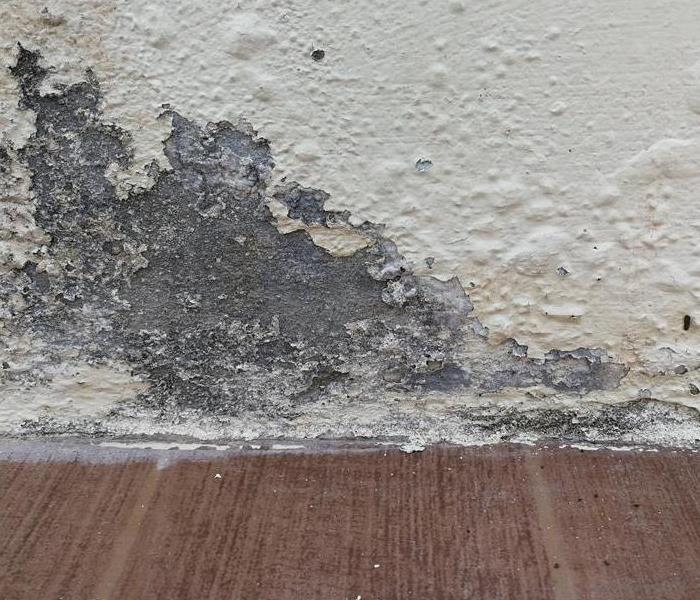 Commercial Mold Damage
Commercial Mold Damage
Believe it or not, mold can appear in even the cleanest commercial buildings in Brooklyn, NY. The fungus spores are spread by air currents and can easily move inside through open doors or windows. Once indoors, the spore waits for a small amount of moisture to awaken its growth potential. So, when a pipe breaks and causes water damage, or the humidity gets high, a mold colony can suddenly appear. As the fungus matures, it often produces a pungent yeasty smell to announce its presence. To prevent mold from growing in your commercial building, find the smell and fight back.
Mold Loves Dampness and Darkness
Mold can build a colony in as little as 48 hours if the area is dark and damp. Wet rags and mops hidden in a maintenance closet can be perfect breeding grounds for spores to take seed. Stacks of papers in storage rooms or basements can also develop mold colonies that produce a musty smell when the hot, humid summer days begin. Try these three tactics to prevent mold growth on wet items:
• Dry the fabrics out before storing.
• Store paper in a climate-controlled room.
• Regularly inspect storage areas for potential mold.
Mold Loves To Hide
If your building has experienced water damage from a broken pipe or an overflowing toilet, mold may be lurking inside walls or under cabinets. If tenants or clients begin complaining about a powerful, unpleasant odor in the restroom a week or two after the flood, you probably have a hidden fungus colony. Consider calling a professional mold removal team to assess the situation and remove the mold by cleaning and sanitizing the area.
Mold Can Be Stopped
Water damage and dark rooms can offer a perfect environment for mold growth. However, once you or your maintenance people learn to recognize the earthy, musty smell that proceeds mold growth, mold prevention can become almost second nature.
For more on Brooklyn click here.
Does Your Insurance Cover Mold
5/13/2018 (Permalink)
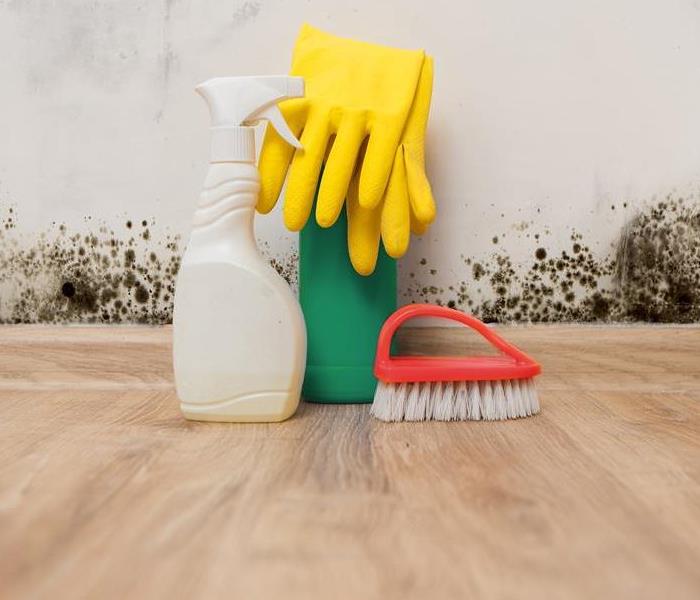 Cleaning your car frequently to ensure mold and mildew doesn't grow
Cleaning your car frequently to ensure mold and mildew doesn't grow
If you’re wondering whether your insurance pays for mold remediation in Brooklyn, NY, the short answer, unfortunately, is probably not. Because every policy is different, you should always call your insurance provider with specific questions, but chances are slim mold is covered. That’s because homeowners insurance doesn’t cover most types of water damage likely to lead to a mold problem. If you have fungus growth due to any of the following, your insurance is very unlikely to cover it.
• Leaks due to a lack of maintenance
• High humidity
• Poor ventilation
• Condensation
• Water seepage due to poor drainage
• Flooding
If you have specifically purchased flood insurance, you may have mold coverage, but nothing is guaranteed. Check your policy or contact your provider for specifics.
What Is Mold Exclusion?
There are some types of water damage likely to be covered by homeowners insurance. A burst water pipe, for example, is almost always covered. You may also have coverage for your sump pump or a backed up sewer. Even if these types of water damage are covered by your policy, remediation for fungus growth may not be. Many insurance companies have started including an explicit ‘mold exclusion’ in their policies. These state outright that mold remediation will not be covered under any circumstances.
Even if your policy doesn’t include a mold exclusion, it may set a cap on how much it will pay for mold remediation. Alternatively, it may only pay for certain things, such as mold removal or mold testing.
What Can You Do?
As a homeowner, you have a few options for how to handle mold remediation in Brooklyn, NY. The best thing you can do is prevent fungus growth to begin with. There are a number of preventative steps you can take, including the following.
• Keep indoor humidity below 50%
• Do regular maintenance
• Landscape so groundwater drains away from house
• Keep rooms well ventilated
Some insurers also offer the option of paying more for mold insurance, however, the coverage may still be fairly limited. If you’re struggling with mold, talk to a claims adjuster or a SERVPRO representative to find out what your options are.
For more on Brooklyn click here.
3 Steps for Repairing Discolored Ceiling Tiles
4/19/2018 (Permalink)
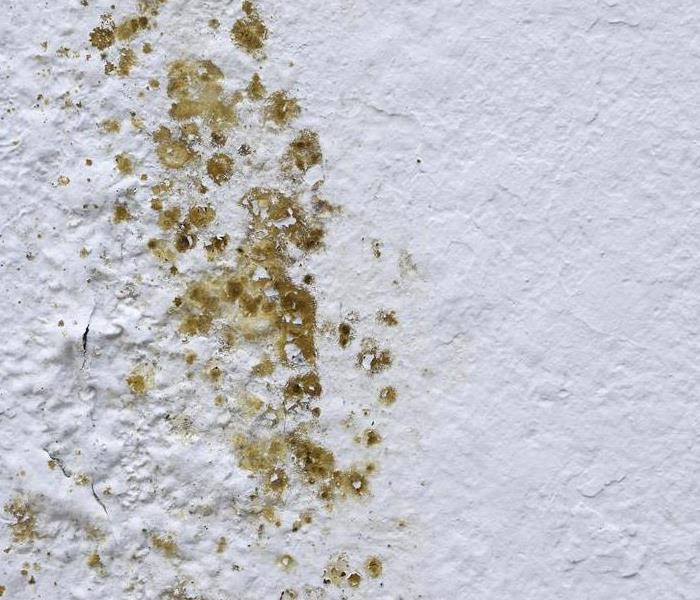 Ceiling Mold Damage
Ceiling Mold Damage
You may not think of discolored ceiling tiles at your Brooklyn, NY, business property as anything to be concerned about. However, staining may be an indication of problems that could add up to major costs later. Tile mold and other stains caused by an abundance of moisture might be causing damage to your building’s ceiling. Fortunately, there are a few steps you can take to resolve the problem and prevent many long-term issues in the future.
1. Note the Nature of the Staining
Before you can have your ceiling repaired, noting what type of tile discoloration you are seeing may help water damage and restoration specialists resolve the issue faster. Light brown, irregular stains may be a sign of a slow leak in your roof, while green or black stains might be tile mold from previous or unseen water damage. Take photos if possible, and let your restoration specialists know how many rooms are affected.
2. Move Equipment and Employees
Even if you cannot see a ceiling leak, it may be affecting the room it is in. If the discoloration is mold, employee activity may be disturbing patches and sending additional spores into the air, where they can travel through your building’s ventilation system and settle elsewhere. You may want to move equipment and employees away from the area until the restoration crew arrives.
3. Ask Questions
Water damage techs may advise you on what is causing the discolorations on your ceiling tile and offer you remediation options. This is a good time to ask them any questions you may have about the repair process and how they plan to handle any mold issues they uncover. If the problem is a slow leak, you might want to ask your techs if you will require separate roof repair or if they can handle it.
There may be several reasons why your Brooklyn, NY, commercial building’s ceiling tiles are stained. Tile mold, slow leaks and other issues may be present; however, quick remediation is possible when you know which steps to take.
Click here for more on Brooklyn.
Insurance Coverage for Mold
3/29/2018 (Permalink)
 Mold damage in Brooklyn, NY
Mold damage in Brooklyn, NY
The best way to protect your home from mold is to prevent fungus growth from occurring in the first place. That means keeping your home in good repair, maintaining proper ventilation and keeping indoor humidity under 60 percent. Unfortunately, mold may become an issue anyway, and if it does, you’ll need to pay a professional mold remediation service in Brooklyn, NY, to take care of it. Will your homeowners insurance cover it? The answer is: it depends.
As a rule, insurance policies exclude mold damage that results from:
• Structural leaks
• High humidity
• Poor drainage
• Water seepage
• Flooding
This covers nearly all of the most common causes of mold damage, so if you’re already dealing with a mold issue, your chances of being covered are low.
What Is Covered
Exactly what is covered will vary depending on your personal insurance policy. Many policies will cover damage resulting from a burst water pipe or a backed-up sewer, including fungus growth, but these may be the only instances in which you will be covered.
It’s also important to check your policy regularly to see if coverage has changed, as many companies are reducing their coverage for mold damage. They may put a cap on how much coverage you can receive for mold damage, which can be problematic if the mold growth is extensive. Some insurance companies explicitly deny coverage for mold no matter what the cause or may require that you pay extra for mold coverage.
What You Can Do
First, read your policy so you understand what is and is not covered by your policy. Talk to a public insurance adjuster or a mold cleanup representative about your situation to learn more about your options for getting coverage and filing a claim. If you live in Brooklyn, NY, where fungus growth is a common issue, it could be worthwhile to pay extra for mold insurance.
Visit us at http://www.SERVPROnorthwestbrooklyn.com for more information.
How do you know if you have mold?
2/28/2018 (Permalink)
One of the most telltale signs of mold damage anywhere is a smelly odor.
It’s unpleasant by itself, but this kind of smelly odor takes on a very musty scent. Anyone who notices a smelly odor like this at home or at work should go ahead with deodorization to make the smell more pleasant, but the smelly odor can’t be ignored with the constant use of deodorization. It’s a sign professional help is needed. Deodorization isn’t something that can be used for purposes other than to cover up the smell. It’s not going to get rid of the problem. Homeowners often forget that deodorization doesn’t get rid of mold or other mildew. It only covers it up and allows people to live a bit more comfortably while they ignore the real problem.
Smelly odor, mildew, fungus, and any high levels of humidity combined with a leak anywhere is a sign it’s time to get a remediation company into the home or office to handle what’s going on with everything. It’s never a good idea to ignore these signs.
One way to ensure mold is handled properly at home or work is to ensure it’s taken care of the right way from start to finish. People might not like the idea of handling mold at home with professionals, but it’s the best way to guarantee it’s handled accordingly and without issue. No one wants to find it’s coming back and spreading rapidly when it’s not handled correctly the first time.
Visit http://www.SERVPROnorthwestbrooklyn.com for more information on mold damage.
Why It’s Imperative To Clean the Breakroom Fridge on a Weekly Basis
2/9/2018 (Permalink)
Take a look in your breakroom fridge and make note of what you see. Do you see nice, clean and organized shelves of food, or do you see bags of forgotten food, rotten fruit, spills and stains, and maybe even a growing patch of fridge mold? Chances are, it’s the latter. Office refrigerators hardly (if ever) get cleaned, which may be why so many come with that telltale mold smell. NBC News ran a report about the dangers of an unsanitary fridge.
That said, while disinfecting the fridge should be a weekly chore, there are better and worse ways of going about the process. If you want to clean up your breakroom fridge, here are a few tips from your Greenpoint, NY, mold remediation team:
• Be mindful of expiration dates, and if something looks funky, toss it.
• However, always ask before discarding anything, otherwise you risk having a lawsuit brought against you for throwing away someone's personal property.
• Wipe up spills to prevent fridge mold, and always make sure the caps are securely fastened to their bottles to help prevent future spills.
• Make cleaning out the office refrigerator and disinfecting it a weekly chore.
To make the last one fair for everyone, devise a cleaning schedule. This way the same person isn’t responsible for cleaning up after everyone else each week. Also, ask each co-worker to go through the fridge every Friday and throw out any leftover items of theirs that have gone bad. If some items are still good, such as bottles of mustard or jars of jelly, ask them to wipe down the containers with a warm cloth and place them back in a designated spot in the fridge.
Office refrigerators can be pretty gross, but with five minutes of everyone’s time at the end of each week, your breakroom fridge can be a clean and healthy place to stow your food. Best of all, it can be free of that dreaded fridge mold.
Visit http://www.SERVPROnorthwestbrooklyn.com for your mold remediation needs.
Four Common Mold Questions
12/18/2017 (Permalink)
Four Common Mold Questions
While mold growth can be a common worry for any home or business owner, having a better understanding of mold can make you realize that it is not as mysterious or dangerous as you thought. Remember that mold only grows in the presence of moisture or high humidity, so you may have water damage as well as mold. If your building suffers from either or both, contact a restoration company in Brooklyn, New York.
1. Is Mold Dangerous?
Most types of mold are not dangerous. Mold is not directly toxic or poisonous, but some types of mold give off toxic spores.
2. Why Does Mold Grow?
Mold growth can only occur in high levels of moisture. If you see mold growing, it means there is a cause of high humidity, usually a broken pipe. Additionally, a recent flood or simply the weather may be the cause. On the other hand, if you find a broken pipe or notice high levels of moisture, you should also be on the lookout for mold.
3. How is Mold Removed?
The process of removing mold is reliable. First, the source of moisture must be identified and fixed. Then the area is contained and affected material is removed. The mold is cleaned, disinfected, and completely eradicated. Then the area is dried and any materials that can be returned are brought back. A final check ensures that the mold is gone and the moisture problem is no more.
4. Am I at Risk of Water Damage?
If you have noticed some mold growth, there is a good chance damage caused by water may have also occurred. This is especially common if the mold is caused by a broken or leaking pipe. Mold restoration should always be accompanied by investigation for other types of damage. Visit http://www.SERVPROnorthwestbrooklyn.com for more information on mold.
Why You Shouldn't DIY Mold Removal
8/30/2017 (Permalink)
Why You Shouldn't DIY Mold Removal
Dry rot, mildew, and fungus are all common. Many home and business owners notice them regularly at home or at work, but does that mean they always indicate mold damage or mold growth? Mold in the home and commercial mold damage happen all the time in every part of the country. Mold is a type of fungus that needs nothing more than just a little moisture and high levels of humidity to grow rapidly and spread quickly, and that causes problems at home or work. Mold growth is nothing to take lightly, and it’s not always what it seems.
Could Mold in the Home or Commercial Mold Damage Be A Problem for Me?
Mold in the home and commercial mold damage are both entirely possible for anyone. If there is any water damage of any kind in a home or office, mold growth can occur. One of the biggest causes of mold damage in a home or office is mold growth behind the walls. It happens when water damage occurs and is not cleaned up in time for mold spores to find it and form. This can happen in a flood, it can happen when a small pipe in the walls has even a small leak, and it can happen when a pipe bursts.
This is why it’s so imperative water damage is cleaned up right away and properly. Mold growth behind walls forms quickly, and it can cause widespread damage because it’s not easily noticeable. Mold growth behind walls can cause serious mold in the home and commercial mold damage if it’s not caught in time. How do people find mold growth behind the walls and clean it up before it causes too much mold in the home or commercial mold damage? They look for the signs.
The Signs of Mold Damage
- Dry rot
- Mildew in the home
- Fungus in the home
- High levels of humidity
- Smelly odor with a musty smell
- Deodorization methods don’t work to get rid of smelly odor
Most people don’t know these are the signs of mold in the home, commercial mold damage, and even mold growth behind walls. Dry rot is a common problem in many areas of the country, and that’s confusing to home and business owners. This is not to say dry rot at home or work means there’s mold growth, too, but it can mean it’s possible. The same is true of mildew. It’s not uncommon to find mildew around faucets and around the grout in bathrooms and showers.
It certainly doesn’t mean a home or business requires mold removal, remediation, or mitigation, but it does indication conditions are right for mold growth. Mildew also needs high humidity and moisture to grow because it’s just another fungus like mold. Humidity and moisture cause mold to grow fast and spread rapidly.
If mold growth behind walls is a problem, the most common sign is a smelly odor. It’s musty and difficult to eliminate even with deodorization. It requires the use of professional remediation and mitigation as well as the proper deodorization technique a restoration company uses regularly.
Is Mold Really that Bad?
Yes. Mold is that bad because it spreads quickly. It’s not all black mold that can cause further problems that home and business owners need to worry about. Black mold is not the only mold that needs a restoration company immediately. Black mold does need to be identified by a restoration company, and it certainly requires mitigation and remediation as well as mold removal services, but all mold is a problem. It takes a professional to thoroughly clean up mold damage as well as use professional deodorization to remove the smelly odor it leaves behind.
Mold removal is best handled by a restoration company. Home and business owners that want to help can turn off their HVAC system to prevent spreading mold spores to other rooms in a building faster and more efficiently. They can clean up water damage immediately, and they can leave mold alone so as not to disturb the spores. Mold damage such as black mold does require professional mold removal, remediation, and mitigation, but so does all mold damage.
Visit http://www.SERVPROnorthwestbrooklyn.com for more information on mold.
The Benefits Of Professional Mold Remediation
7/25/2017 (Permalink)
The Benefits Of Professional Mold Remediation
Mold damage is a nuisance in many homes that are exposed to water damage. Mold can also grow along the grout lines of your bathroom tiles and cause a messy discoloration. The molds can also grow in the siding, deck, and handrails if you do not address the damp conditions in the shortest time possible. Also, the mold can be dangerous if inhaled. You should address the mold damage as soon as possible.
Prevent Floods
Taking the right measures after flood damage is the sure way to succeed in your mold removal initiatives. The mold removal specialists have the necessary training that can help when it comes to remediation. Flood mitigation can help you to succeed whenever you embark on your mold removal operations since the dry surfaces will curtail the development. However, you must be cautious during mold removal. If you disturb the spores, they can fly around your home and spread quickly, causing severe mold damage.
Safety precautions
The experts must be careful during the commercial mold damage removal. There is a risk of spreading the mold in home walls if you do not seal off the working zone. Commercial mold damage elimination calls for a restoration company that can prevent the spread by taking the necessary safety precautions during the exercise. While the fungus and mildew have a smelly odor, deodorization is not always advisable. The mold in home surfaces can cause a smelly odor. While you can rely on deodorization to get rid of the smelly odor, it is not a lasting solution. The removal of mildew, fungus, and mold in home floors can be a daunting task if you do not have the necessary expertise.
Avoid DIY
Whether you are grappling with black mold, dry rot, or mold growth behind wall, you should not attempt the project alone. The dry rot can cause the spores to move to various parts of the house and land on your furnishings, walls, and floors. The mold growth behind wall can be quite difficult to handle if you do not know the extent of the black mold development. If you want to control the dry rot and prevent the mold growth in the future, you must undertake a thorough inspection. Since you do not want to expose your family to the black mold, a restoration company will handle the operation in a professionally.
Remediation
Besides taking the right measures during the remediation process, mitigation is also vital. Since the fungus and mildew develop under damp conditions, preventing the possibility of flood damage is a great remedy against mold growth. Mold remediation and mitigation involve removing the visible fungus and mildew. However, the elimination of mildew and fungus is not sufficient to prevent the mold growth. It is vital to engage a commercial mold damage specialist to come up with the bespoke mold remediation and mitigation plans for your home.
Signs of mold growth
The smelly odor can signify that there is considerable mold growth behind wall. However, you need a restoration company to handle the problem on your behalf. Since the black mold can be toxic, you should be careful. Instead of deodorization, the specialists will get rid of the dry rot by taking some rigorous measures without compromising your health. While vinegar and bleach can prevent the minor mold growth, they fall short when it comes to handling the mold in home walls. Since deodorization cannot prevent the mold damage, you need help from a restoration company if you want to curb the mold growth behind wall. When it comes to mold development, the wet areas are the usual suspects. Check out for mold growth in the bathrooms and kitchens if you want to nip the problem in the bud.
Visit http://www.SERVPROnorthwestbrooklyn.com for more information on mold.
Why Mold Damages at Home Requires Professional Help
7/3/2017 (Permalink)
Finding mold in the home or commercial mold damage causes a lot of confusion.
It’s easy to see professional mold removal services are required if the mold damage is severe, but it’s easy to think it’s something that can be handled at home with DIY methods when only a little mildew or fungus is apparent. It’s not easy to know which route to take when mold in the home or commercial mold damage is evident, but it’s always a wise idea to go with professional mold removal, remediation, and mitigation. This is the way to ensure mold damage, mildew, and any other fungus is killed, removed, and handled accordingly.
Mold Removal Benefits
Professional mold removal companies use upgraded equipment. This means they can get into smaller spaces to handle mold damage that’s not easily accessible for a homeowner or a business owner to get to without the same equipment. It’s not always simple to handle this kind of remediation without a mitigation service, which is why professional help is required.
The other obvious benefit of professional remediation and mitigation includes finding the source of mold damage. Mold in the home and commercial mold damage both start somewhere, and many people might not realize they need to find the source. It’s common to just clean it up when mold in the home or commercial mold damage become a problem, and few people consider tracing the source.
It’s usually the result of a leak or other water damage somewhere in the home or in the office. Professionals trace the problem and find out where it’s gone so they have a chance to figure out how to stop the flow of water into the house or the office to prevent more mold from occurring.
Learning to Prevent Mold
Mitigation is the action of reducing the severity, seriousness, or negative consequences of something. Experience in mold mitigation results in professionals learning how to prevent mold damage in the future. It’s better to keep it from forming than it is to fight it when it does occur, which is why so many people prefer to handle it this way. When mildew or fungus is present in a home, it’s a good indication there might be mold elsewhere. Mold is fungus and it grows in the same conditions as mildew. Damp, hot, and humid is that it takes for mold to grow. Knowing this allows homeowners to gain control of mold in the home or commercial mold damage.
Visit http://www.SERVPROnorthwestbrooklyn.com for more information on mold damage.






 24/7 Emergency Service
24/7 Emergency Service





